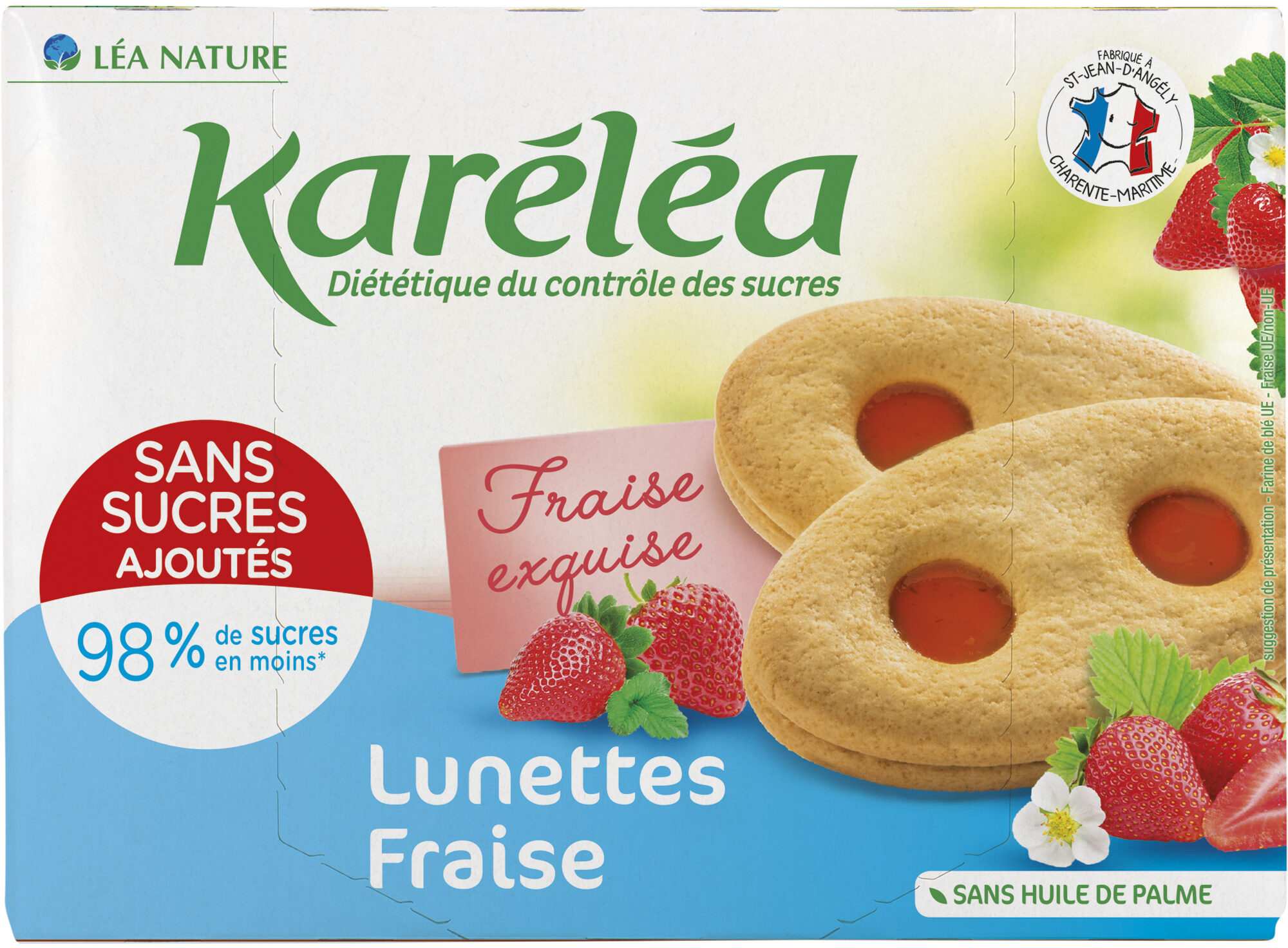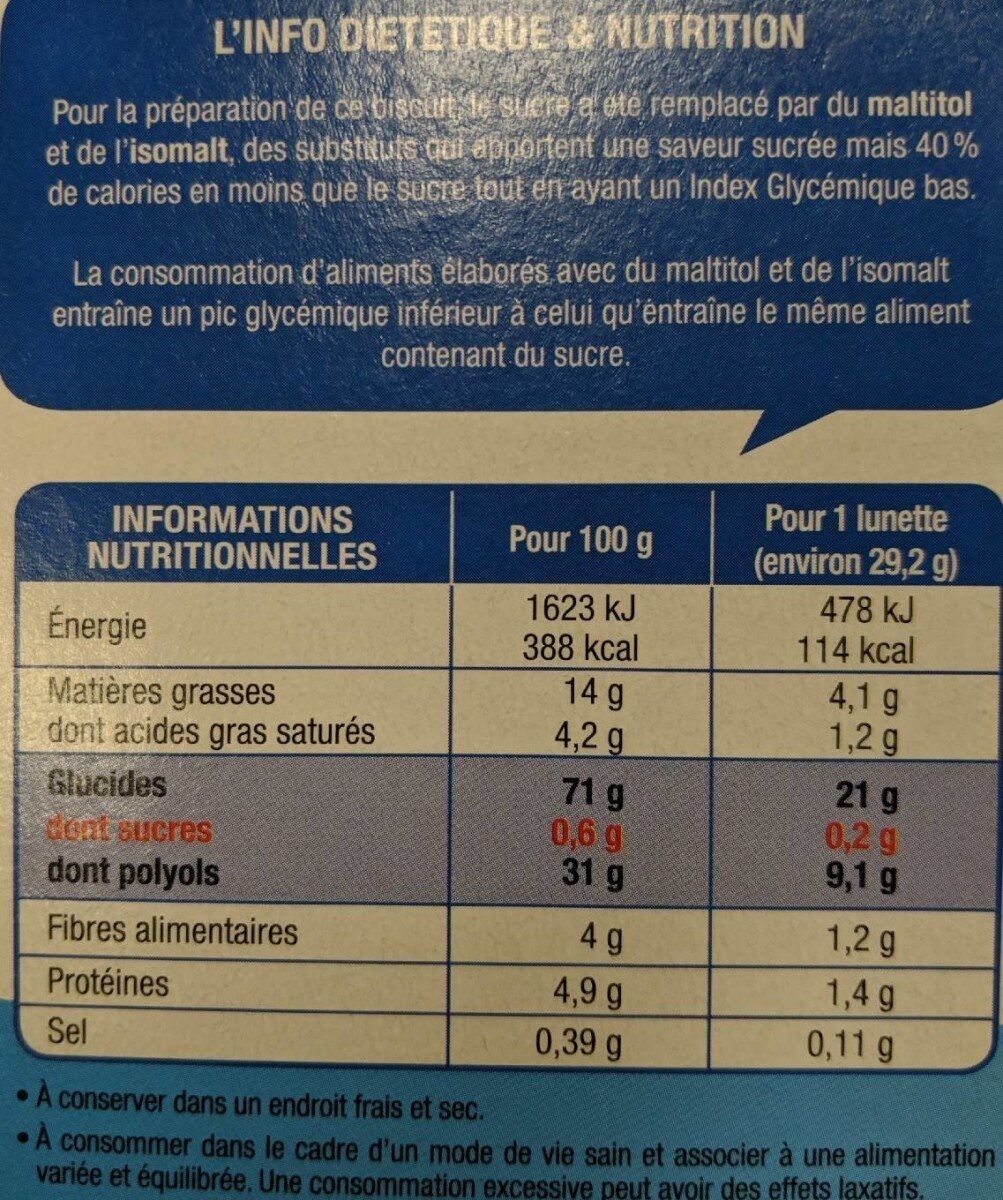Lunettes fraise - Karéléa - 175 g
This product page is not complete. You can help to complete it by editing it and adding more data from the photos we have, or by taking more photos using the app for Android or iPhone/iPad. Thank you!
×
Some of the data for this product has been provided directly by the manufacturer Léa Nature.
Barcode: 3456300010732 (EAN / EAN-13)
Common name: Sablés pâtissiers fourrés à la fraise, aromatisés, avec édulcorants.
Quantity: 175 g
Packaging: Plastic, Cardboard, fr:Conteneur, fr:Emballage individuel
Brands: Karéléa
Categories: Snacks, Sweet snacks, Biscuits and cakes, Biscuits, Filled biscuits, Strawberry biscuits, fr:Lunettes à la fraise
Labels, certifications, awards: Made in France, No added sugar, No palm oil, Nutriscore, Nutriscore Grade B
Manufacturing or processing places: Saint Jean d'Angély
Stores: carrefour.fr
Countries where sold: France
Matching with your preferences
Environment
Carbon footprint
Packaging
Transportation
Other information
Conservation conditions: A conserver dans un endroit frais et sec. A consommer de préférence avant fin / Numéro de lot :
Customer service: Service Relation Consommateurs, SERVICE RELATIONS CONSOMMATEURS
Report a problem
Data sources
The manufacturer Léa Nature uses Equadis to automatically transmit data and photos for its products.
Product added on by kiliweb
Last edit of product page on by kiliweb.
Product page also edited by asmoth, driveoff, openfoodfacts-contributors, org-lea-nature, packbot, parisi, roboto-app, segundo, taztempest, yuka.U2FFalR2eGVnZG8zaGN4aS96elo2b3hUL01TdFVtV3dBdE1XSWc9PQ, yuka.sY2b0xO6T85zoF3NwEKvlhZ-af2BmwKbDSLul3fW2sWtDcbJT_t92JDGaqo.










